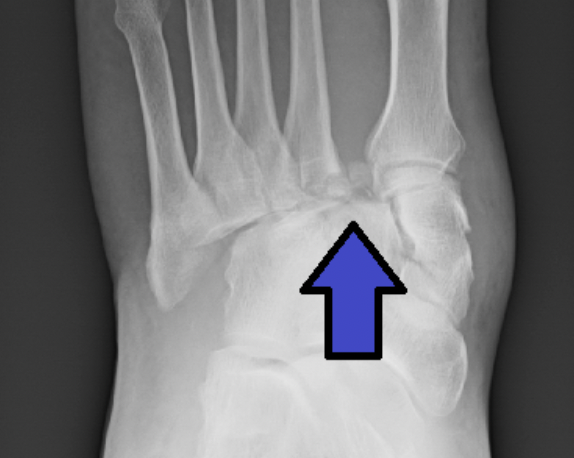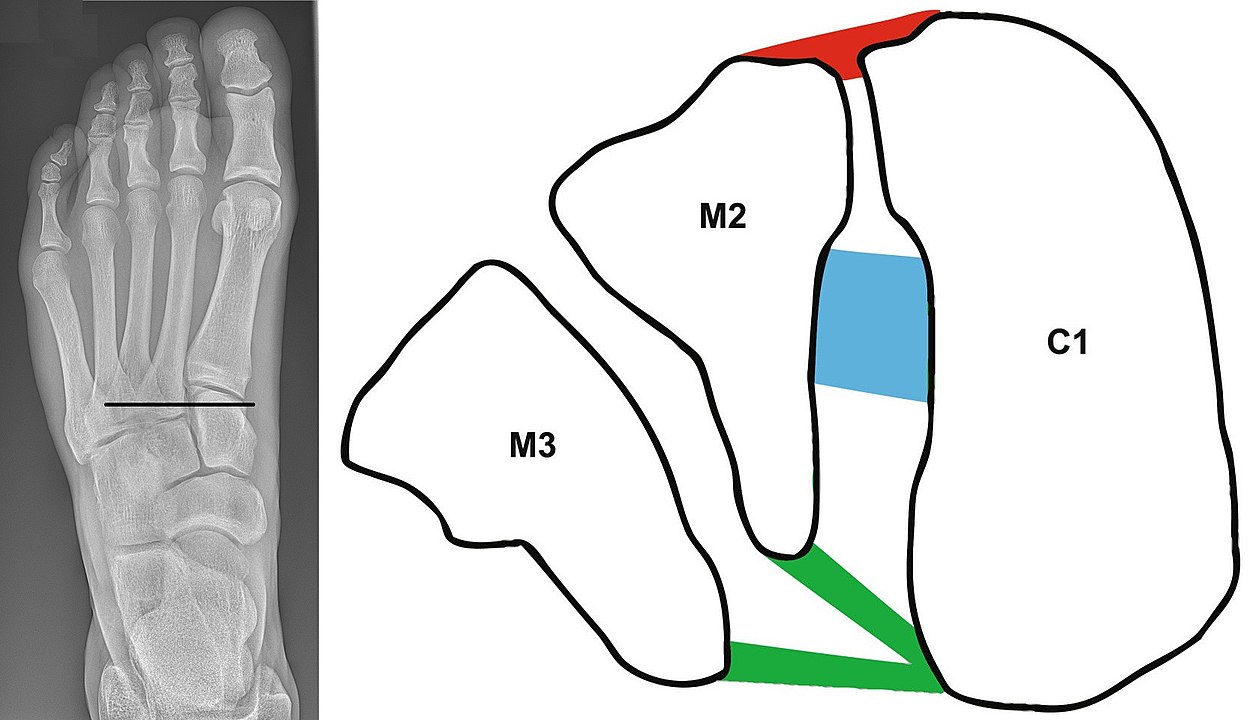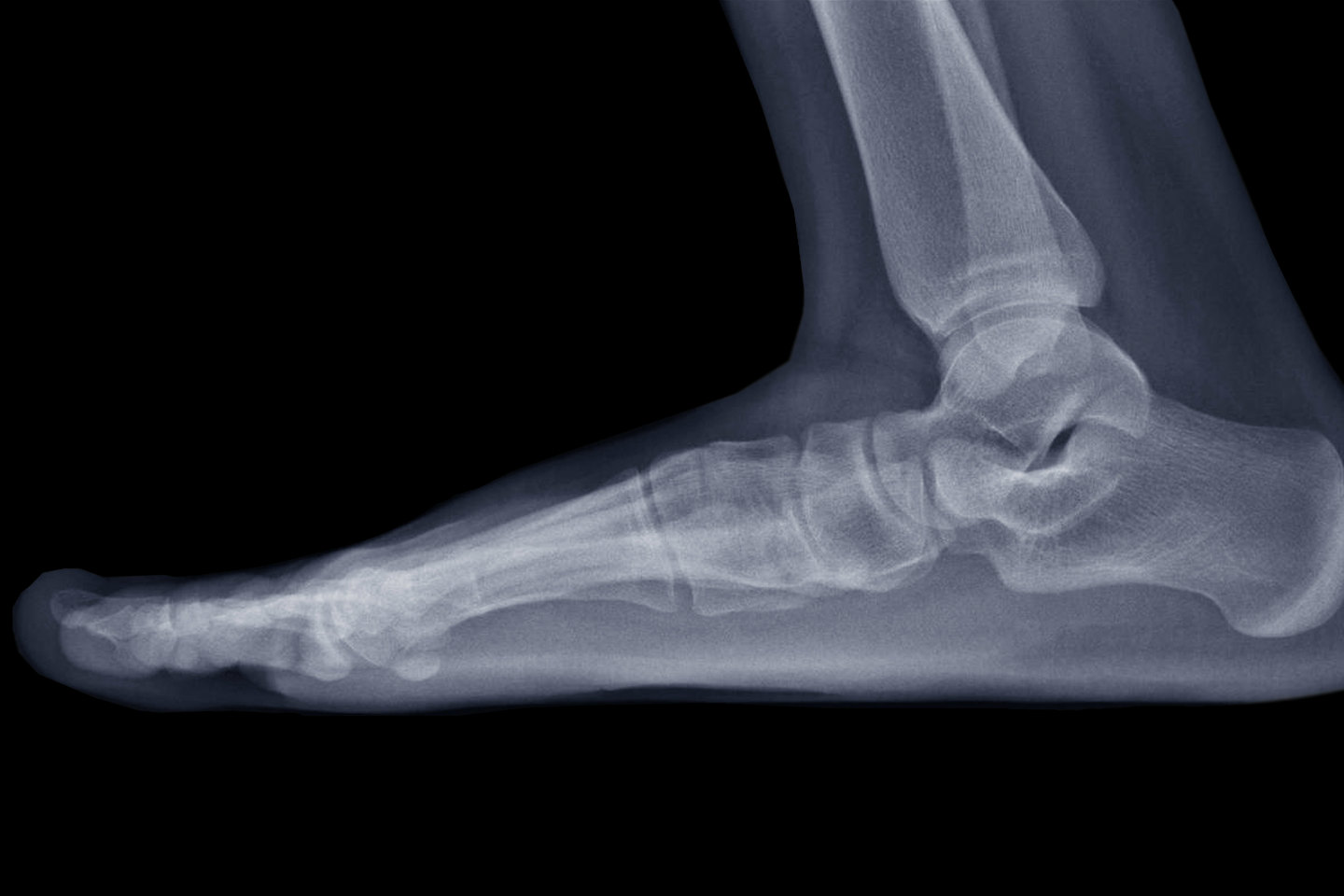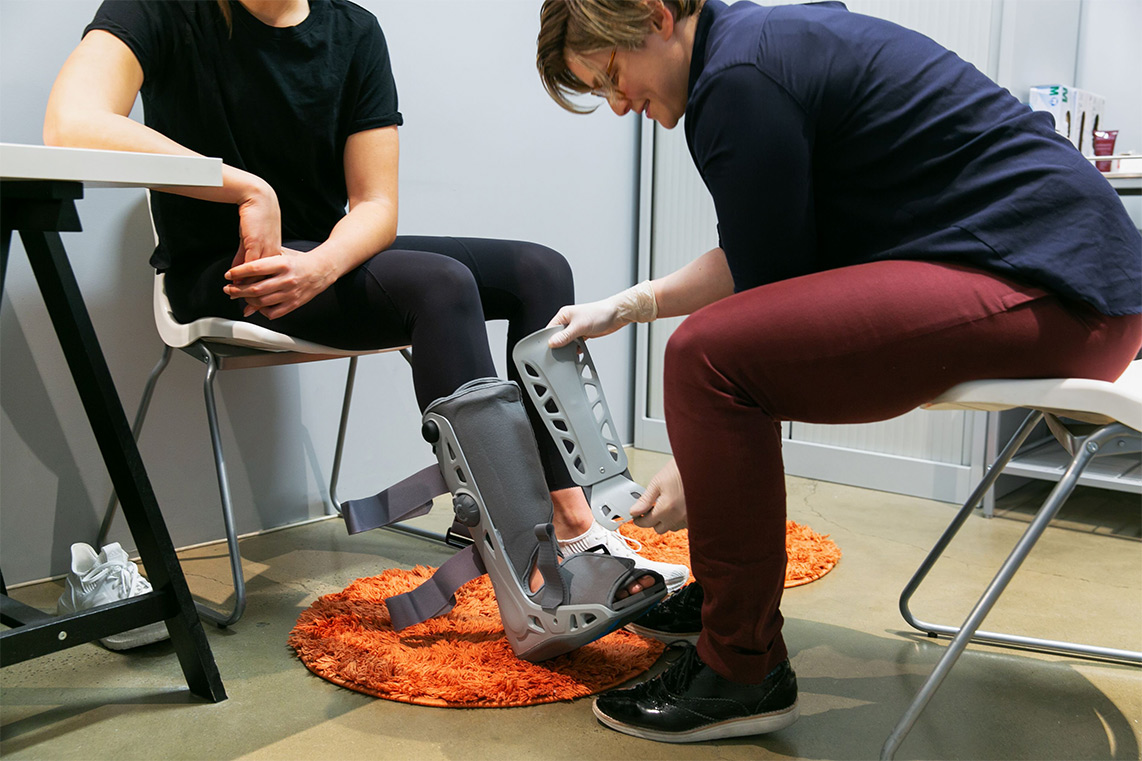Lisfranc Treatment Services
Orthotics Plus provides management services for Lisfranc injuries, a joint in the midfoot region.
It is where the metatarsal bones (the long bones leading to the toes) connect with the tarsal bones (the bones in the foot arch).
When these ligaments are disrupted, it can lead to significant pain and challenges in management.
If left untreated, it may result in undesirable long-term consequences such as midfoot arthritis, pain on weightbearing and dysfunction. Both surgical and non-surgical approaches are available for treatment, and Orthotics Plus is well-equipped to offer assistance in both scenarios.
Fun fact: The Lisfranc joint is named after a French surgeon who was particularly proficient at amputating through this joint and first described a method of partial foot amputation through this region.

Lisfranc Injuries Explained
Role
The primary role of the Lisfranc joint is to provide stability and support to the midfoot region of the foot. It allows for proper weight distribution and coordination of movement between the metatarsal bones (forefoot) and the tarsal bones (hindfoot).
This joint plays a crucial role in maintaining the foot arch and ensuring efficient and balanced mobility during activities such as walking, running, and jumping.
Mechanism of Injury
Lisfranc injuries commonly occur during weight-bearing activities and are caused by a forceful axial load on the foot when it is in a plantarflexed position. This often happens when missing a step, during sports, or accidentally stepping into a hole. The result can be a crunching type experience, where the metatarsals can dislocate/move anteriorly.
The ligament between the base of the 2nd metatarsal and the 1st/2nd cuneiforms is typically affected. This leads to a separation of the Lisfranc joint. This separation causes the first and second metatarsals to widen, creating a noticeable gap in this area. This juncture is inherently weaker and prone to injury.
Resulting Damage
A Lisfranc injury can encompass a combination of different types of damage, including rupture, fracture, and dislocation to the involved areas.
The complexity of Lisfranc injuries arises from the various ways the different components of the midfoot can be affected. These injuries often require careful assessment and appropriate treatment to ensure proper healing and the restoration of normal foot function.
Long Term Risks
If misdiagnosed or missed, individuals may experience a flattening of their foot posture. This alteration leads to discomfort and potential early-stage arthritis.
This progression becomes especially evident when, approximately a year later, the affected foot displays a significant splaying and loss of its arch. It can also cause pain during push-off (plantar) movements and on weightbearing.

By Left image: Mikael Häggström. Right image: Article authors: David D Rettedal, Nathan C Graves, Joshua J Marshall, Katherine Frush and Vassilios Vardaxis


Treatment of Lisfranc Injuries
Lisfranc treatment options encompass both surgical and non-surgical approaches, with the decision based on the severity of the injury.
A standard treatment regime is wearing a cast or Moon boot for a period and being non-weight bearing, then transitioning to a CAM walker with a custom arch support whilst weight bearing and then transitioning to normal shoes with custom arch support.
Conservative
A subtle widening or mild damage to the Lisfranc ligament might be managed conservatively.
This involves wearing a moon boot with arch support, which is essential for maintaining proper arch height and limiting movement within the Lisfranc Complex. This conservative treatment usually spans at least six weeks but can extend much further.
Surgical
Alternatively, surgical intervention is an option (the surgery is not performed by Orthotics Plus), wherein a small plate is placed across the area where the ligament sits. This plate helps hold the structures together, promoting healing.
After surgery, a period of two weeks in a back slab is followed by wearing a moon boot with arch support. Similar to the non-surgical approach, arch support is recommended for a 12-month duration to support the Lisfranc Complex during the healing process.
Ideal Outcomes
Anatomical Alignment: Treatment aims to realign the metatarsal bones and restore the proper relationship between them. This involves reducing any dislocated or displaced bones and ensuring that they are properly positioned.
Stability and Mobility: The ideal result is to regain stability in the midfoot region, allowing for normal weight-bearing and walking.
Pain Relief: Treatment should alleviate pain associated with the Lisfranc injury. This includes managing both acute pain from the injury itself and any chronic pain that may have developed.
In summary, we aim to restore normal function, minimise long-term complications and help patients return to normality as quickly as possible!
In almost every case, both the person’s moon boot and shoes need to receive some form of arch support for quite an extended period up to 12 months.
The choice of foot orthotic depends on the expected duration of wear and patient anatomy. A prefabricated orthotic with substantial support can be utilised as a cost-effective option. For individuals with complex foot shapes, custom-made orthotics might be more appropriate.
Diagnoses & Severity
These injuries are frequently overlooked rather than inaccurately diagnosed. Individuals might report pain on the top of their foot, but when plain X-rays are taken, everything seems clear and normal.
A step in aiding diagnosis is understanding the mechanism of injury.
- What precisely happened?
- How did the fall occur?
- What was the positioning of the foot during the incident?
These details often provide crucial insights into a Lisfranc injury as a possibility.
Additionally, a distinctive occurrence is the development of a bruise underneath the foot in the arch. The bruise may not be visible to clinicians if patients delay seeking help for several weeks, assuming the underlying issue will resolve on its own.
Its presence is a strong indication of a Lisfranc injury. These cues are valuable for not only recognising if a problem exists but also gauging its severity.
In terms of diagnostics, a weight-bearing CT scan is usually the correct approach. Unlike non-weight-bearing X-rays, which might not reveal widening if no bony fractures are present, a weight-bearing CT or X-ray is more accurate. This method offers the best chance of detecting any significant widening, which is key to diagnosing these injuries accurately.
Contact Us for Support Today
Early diagnosis and treatment is an advantage to successful rehabilitation for Lisfranc injuries.
- We offer multiple clinics in Melbourne and same-day bookings with little to no wait times
- We stock high-quality moon boots inhouse and can make or provide appropriate arch support
- We can work alongside your doctor and surgeon where appropriate
- We will customise all footwear and equipment to the anatomy of your individual feet
Contact our friendly administration team to book an assessment and treatment today.




